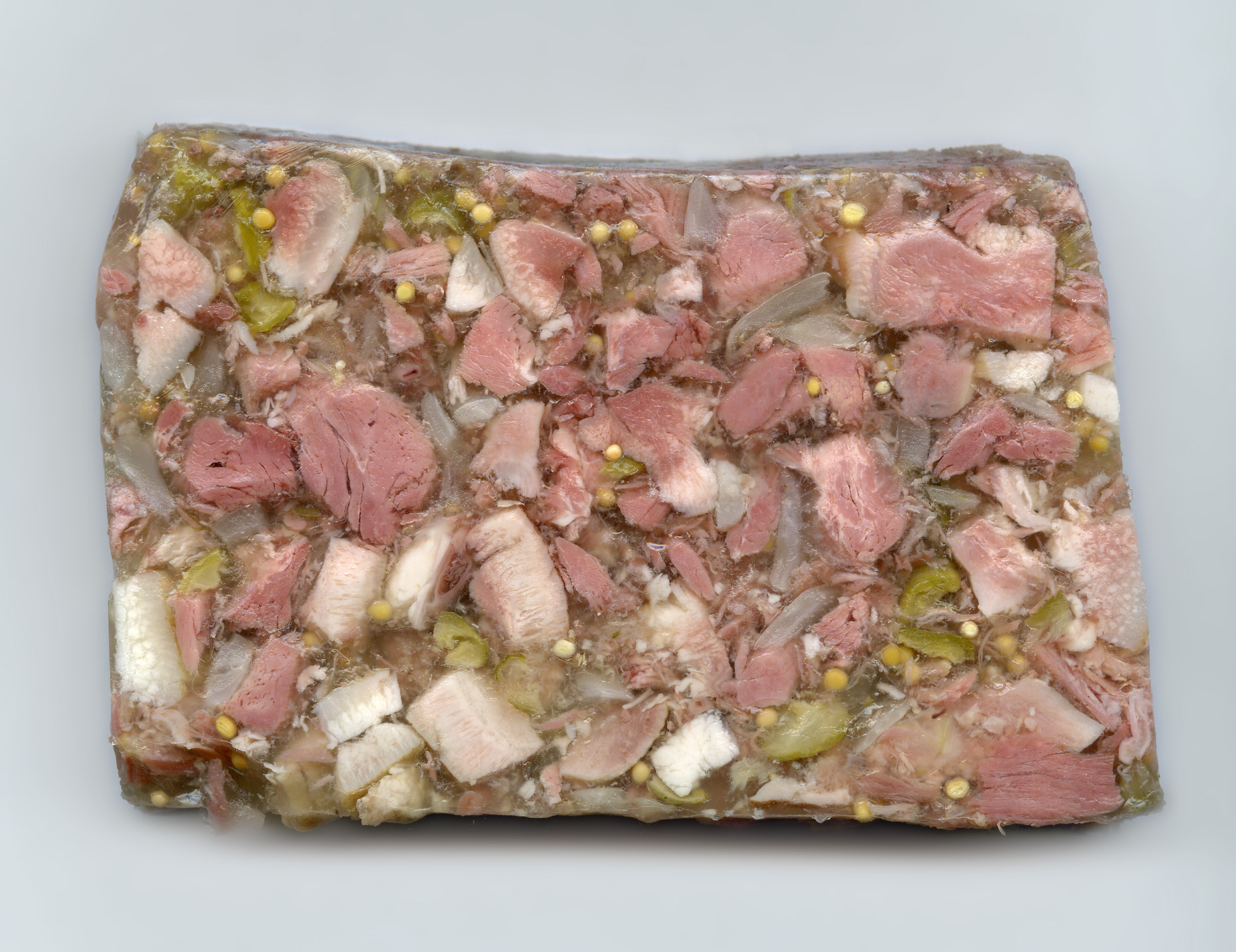
Making Head Cheese and Scrapple
Head cheese is not a cheese made from milk, but a pressed meat dish. It’s usually made from the heads of pigs and cows, although the brain, eyes, and ears are usually removed. Scrapple is also usually made from the head, but thickened with corn meal or buckwheat flour.
INFORMATION BELOW FROM 1800s COOKBOOKS
PORK HEAD CHEESE
This is made of the head, ears, and tongue of a pig. Boil them after cleaning them, in salted water until tender. Strip the meat from the bones and chop (not grind) very fine. Season with salt, pepper, sage, and powdered cloves, to taste. Then add one cup of good vinegar. Mix all together thoroughly and pack hard into molds or bowls, interspersing bits of the tongue cut into oblongs and triangles an inch in length. Wet a plate and press down on the top of each mold and place a weight on top of that. In two days, it will be ready to eat. If you desire to keep it several weeks, you can turn it out of the molds and immerse in cold vinegar in stone jars. This will preserve it admirably and you have only to pare away the outside if too acid for your taste
PORK HEAD CHEESE, Another
Take the head, tongue, and feet of young fresh pork, or any other pieces that are convenient. Having removed the skin, boil them till all the meat is quite tender and can be easily stripped from the bones. Then chop it small, and season it with salt and black pepper to your taste, and if you choose, some beaten cloves. Add sage leaves and sweet marjoram, minced fine, or rubbed to powder. Mix the whole very well together with your hands. Put it into deep pans with straight sides. Press it down hard and close with a plate that will fit the pan, putting the under side of the plate next to the meat, and placing a heavy weight on it. In two or three days, it will be fit for use and you may turn it out of the pan. Send it to the table cut in slices, and use mustard and vinegar with it.
CALF HEAD CHEESE
Boil a calf head in water enough to cover it, until the meat leaves the bones. Then take it out with a skimmer and place into a wooden bowl or tray. Take from it every particle of bone. Chop it small, season with a tablespoon of salt and a teaspoon of pepper. If liked, add a tablespoon of finely chopped sweet herbs. Lay a cloth in a colander, put the minced meat into it, then fold the cloth closely over it. Lay a plate over, and on it a gentle weight. When cold, it may be sliced thin for supper or sandwiches. Spread each slice with made mustard.
=================================================
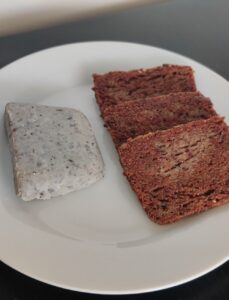 SCRAPPLE
SCRAPPLE
This is generally made of the head, feet, and any pieces which may be left after having made sausage meat.
Scrape and wash well all the pieces designed for the scrapple, put them in a pot with just as much water as will cover them. Add a little salt, and let them boil slowly till the flesh is perfectly soft, and the bones loose. Take all the meat out of the pot, pick out the bones, cut it up fine, and return it to the liquor in the pot. Season it with pepper, salt, and rubbed sage, to the taste. Sweet marjoram may be added with the sage, if preferred.
Set the pot over the fire, and just before it begins to boil, stir in gradually as much Indian meal* as will make it as thick as thick mush. Let it boil a few minutes, take it off, and pour it in pans. When cold, cut it in slices, flour it, and fry it in hot lard, or sausage fat.
Some prefer buckwheat meal; this is added in the same manner as the Indian. Indian meal is preferable, as it is not so solid as buckwheat.
This is a convenient breakfast article for laborers, but too hearty for persons of sedentary habits.
In cold weather this can be kept several weeks.
*Indian meal – corn meal
SCRAPPLE No. 2
Take eight pounds of scraps of pork that will not do for sausage. Boil it in four gallons of water. When tender, chop it fine, strain the liquor and pour it back into the pot. Put in the meat, season it with sage, summer savory, and salt and pepper to taste. Stir in a quart of corn meal, simmer a few minutes, then thicken it with buckwheat flour very thick. It requires very little cooking after it is thickened, but must be stirred constantly.
=================================================
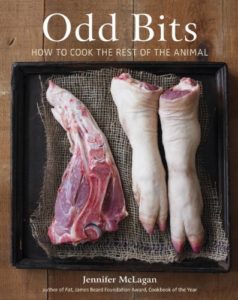
ODD BITS: How to Cook the Rest of the Animal
We’re all familiar with the prime cuts—the beef tenderloin, rack of lamb, and pork chops. But what about kidneys, tripe, liver, belly, cheek, and shank? Odd Bits will not only restore our taste for these cuts, but will also remove the mystery of cooking with offal, so food lovers can approach them as confidently as they would a steak. From the familiar (pork belly), to the novel (cockscomb), to the downright challenging (lamb testicles), Jennifer McLagan provides expert advice and delicious recipes to make these odd bits part of every enthusiastic cook’s repertoire.
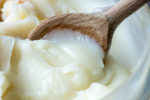
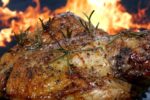
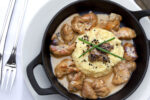
4 thoughts on “Making Head Cheese and Scrapple”
Looking for permission to include your head cheese recipe in a local history book I am soon to be self-publishing.
Please feel free to use the recipe. My blog (and books) are written for historical entertainment, so I don’t document where I find each recipe. But they all originate from 1800s cookbooks, which are in the public domain and free for anyone to use.
Interesting article but I’m too squeamish for these recipes.
Me, too, but think of hot dogs, sausage, bologna, salami, etc. I don’t know if they have meat from the head anymore, but I know they used to use all the scraps. I don’t eat lunch meats anymore, but do eat sausage.